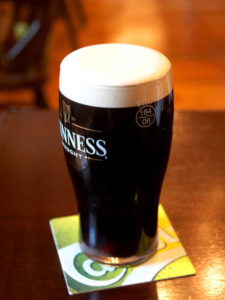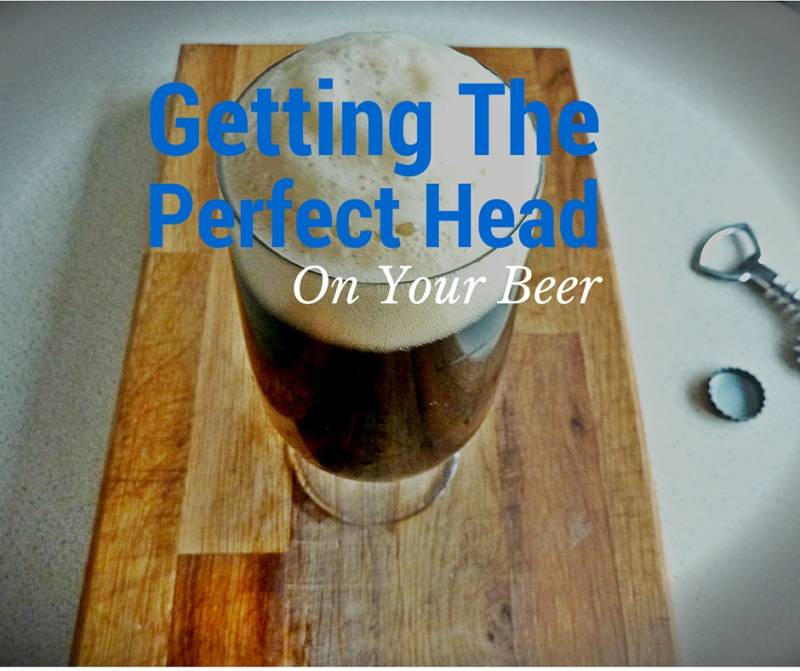How To Get A Good Head On Your Beer
A nice layer of creamy foam on top of a pint of beer is a key part of what makes a beer look like a beer. It could be argued whether it makes any difference to the flavour and taste of your pint. I think it definitely has a psychological, aesthetic and texture (mouthfeel) benefits that mean achieving a desirable level of foam on top of your home brew benefits the drinker. The factors that produce good foam and head retention are complex but here we will look at some simple variables that both help or hinder this quality.
Table of Contents
Sparkling Beer?
Before I start however I want to point out that when you are served a pint in a pub, particularly in Britain, the way it is served and often in which part of the country, may affect how much of a head you get on your pint.
When a pint of cask ale is pulled through a beer engine (handpull) a device known as a sparkler can be attached to the tap to promote the formation of a head that is seemingly indestructible, with a texture like double cream. It’s common to see sparklers in the north of England but also in some pubs elsewhere throughout the UK. The sparkler works by forcing the beer through multiple small holes at the nozzle of the handpull aerating and forcing the CO2 out of the beer forcing a thick creamy head to be formed.
Whilst the sparkler does create a thick head that will last throughout the entire pint by forcing the CO2 out of the beer it will alter the mouthfeel and the taste a small amount. The CO2 provides acidity and forcing it out of solution will change the beer. Some prefer beer served through a sparkler, some do not. It’s all about personal taste and most pubs will add or remove the sparkler if you ask nicely.
As a home brewer isn’t really a factor in serving your own beer unless you serve through a beer engine so let’s have a look at some of the factors you can alter that are going to impact the head retention.
Glassware
One sure fire way to serve a beer with poor foam and head retention is to pour it into a dirty glass. Well, when I say dirty glass what I mean is a glass that has either not been rinsed properly of some detergent/sanitizer or has oily residues from things like bar snack or lipsticks.
Fats and oils otherwise known as Lipids are an active foam destroyer. If you regularly drink and at the same time enjoy the snacks that go hand in hand with a beer then there is plenty of opportunities for these lipids to destroy the foam on beer. Washing your glasses in dirty dishwater that has had other washing is another way to leave traces of fat and oil.
There are also lot of soaps hand sanitisers that leave residue of compounds that result in a collapsed head so rinsing your beer glasses thoroughly and drying will avoid this with your home brew and beer.
Glasses will again have a part to play, a tulip shaped glass which is often used for certain Belgian beer styles for example are said to act as a stabiliser and support the head. Some breweries also etch glasses to promote foam production, the etchings act as a catalyst for bubbles to form.
Beer Head Forming Ingredients
The recipe of beer can dictate its foaming qualities, the most important attributes for froth formation are protein compounds. Generally the higher level of proteins in the beer, the better for froth formation. We know the malt is the source of protein good for producing nice creamy heads on beer, selecting malts or grains high in protein is an easy thing for brewers to do.
One of the grains available to the home brewer is wheat, this is why you see a lot of beer recipes with 5-10% wheat malt added, wheat is one of the grains that contains higher amounts of proteins.
Other ingredients which are more commonly used like oats are high in lipids and whilst they do have a higher level of protein which increases head retention properties, the two work against each other. Using wheat instead of oats may be a better choice as the protein levels are high, which is good for foam and the lipids a lot lower than oats.
The malt that is available to brewers today is generally well modified but differ from one variety to another, a fully modified malt will have had more protein degradation than a less modified one. Some beers you brew may be more prone to having a good layer of foam because the malt is less modified and contains more protein and head forming compounds. Try and do a little research into the malt you buy and find out from the malt specification sheets this information and you will have a clearer idea of whether your malt is going to result in a frothier beer.
It is also worth mentioning here that if you add anything to your beer other than hops, malt, water and yeast to consider what it’s going to do to the head of the finished brew. A common addition is chocolate in the form of cocoa nibs for example, these contain a lot of fats which are definitely going to destroy foam.
Carbonation
Carbonation is highly important for beer foam, you will know that the way you pour a beer will affect the amount of foam. When you pour a beer from a height and allow it to splash the CO2 is released and generate a bigger head.
As a general rule the higher level of carbonation the more resulting froth on your beer, carbon dioxide escaping from solution will ensure head formation but the other properties mentioned here will dictate how long it sticks around.

Nitrogen
The gas that is used to carbonate the beer also has a part to play in the stability of the head. In some beers most notably a certain Irish beer, a mix of nitrogen and CO2 is used to carbonate the beer rather than just CO2. Nitrogen is less soluble in liquid which helps with the formation of bubbles providing a long lasting head and a creamy texture throughout the beer.
As a home brewer it is not an easy route to achieving a nitrogen carbonated beer but it is still possible if you use corny kegs and it will definitely make a unique home brew.
There are a lot more complexities around beer head and the nature of what causes it but hopefully this introduction will give you a little more understanding of what’s going to affect it in your home brew.





Leave a Reply
Want to join the discussion?Feel free to contribute!